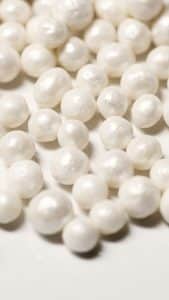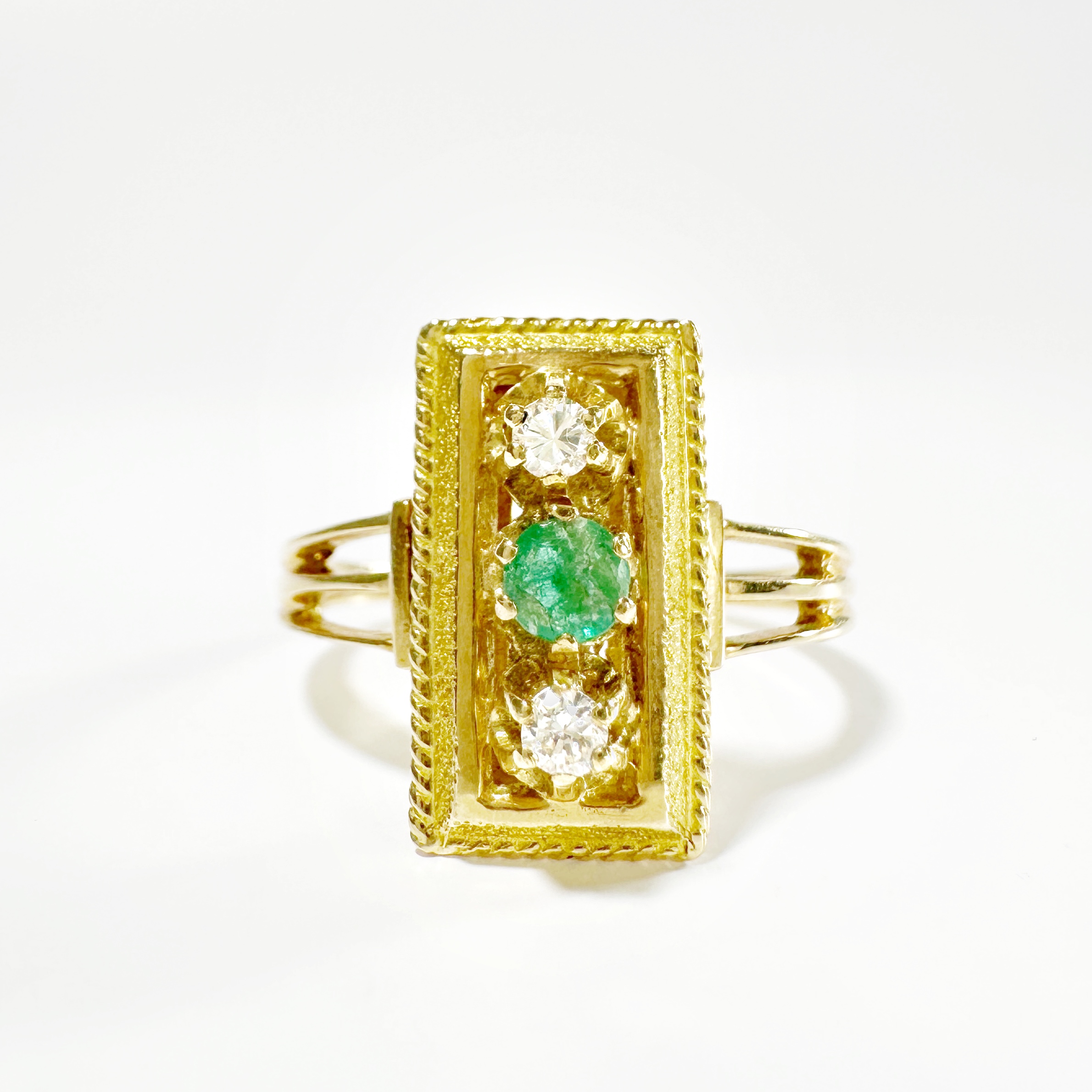 Called Aphrodite’s tears in reference to the goddess of love, pearls have fascinated since ancient times. June’s birthstone, this gem of organic origin is a perfect declaration of love without being a stone of commitment like diamonds.
Called Aphrodite’s tears in reference to the goddess of love, pearls have fascinated since ancient times. June’s birthstone, this gem of organic origin is a perfect declaration of love without being a stone of commitment like diamonds.
ORIGINS OF THE WORD PEARL
The word “pearl” comes from the Latin perna (thigh and shell) and refers to the shape of some mussels. However, the use of this term to designate the shimmery gem is recent.
Until the twelfth century, the precious bead were designated by their Greek and Latin name: margarita. In English, the term “union” was also used to describe a large bead.
HISTORY OF THE PEARL
 The first writings referring to june gem come from China and date back to 2300 BC. Texts from India and Egypt also evoke the bead, described as a magnificent and often sacred gem.
The first writings referring to june gem come from China and date back to 2300 BC. Texts from India and Egypt also evoke the bead, described as a magnificent and often sacred gem.
In the West, it was Alexander the Great who popularized the shiny bead as an ornament during his conquest of the East -334 to -325. In ancient Rome, it was considered a symbol of wealth and power, reserved for the highest ranks of society. Tradition dictated that wealthy Roman families bought one to two pearls a year for their daughters so that they could inherit a full beaded necklace when they came of age.
For the Arab people, just like the Persians and Assyrians long before, the white gems were also discovered thanks to their abundance in the oysters of the Persian Gulf. Prized for their beauty and shimmering reflections, they were also used to decorate jewelry.
 FORMATION OF THE PEARL
FORMATION OF THE PEARL
The sea beads are formed by a reaction of mollusks (oysters) to fight infections. When an irritating object – for example, a piece of coral or a parasite – is introduced into the soft tissue of mollusks, a natural defense mechanism is triggered. The foreign body is then wrapped in a mixture of calcium carbonate – better known as “mother-of-pearl”, until it forms a full beads.
Because of its natural and random formation, the precious bead survived the centuries remaining very rare and precious, until the Japanese discovered a way to produce the sea gems in a systematic way. This is the birth of pearl culture in the mid-twentieth century thanks to Kokichi Mikimoto.
MAJOR PEARL PRODUCERS
There are mainly four types of pearls, each with its origin: cultured or freshwater, South Sea, Tahitian and Akoyan.
 CULTURED PEARLS
CULTURED PEARLS
They are a variety of fresh water that produces the gem in abundance, in various shapes and colors. Thanks to this process, an oyster can produce up to 50 beads. Made entirely of mother-of-pearl, the sea beads thus produced are very bright and colorful and most often baroque in shape. Nevertheless, oysters cultivated in fresh water in China can receive a spherical foreign body, making it possible to produce round gems with a diameter of up to 14 millimeters.
 THE PEARLS OF THE SOUTH SEAS
THE PEARLS OF THE SOUTH SEAS
They are produced in Australia, Indonesia and the Philippines. The oysters that produce them are renowned for yielding white, silver and golden beads. It usually takes 2 to 6 years to form a pearl of this variety. Although it is possible to implant only one foreign body per host (or nucleus), it is possible to implant them several times in a row. They can then be returned to the wild in order to reproduce. The specimens is among the ones that produce the largest pearls, ranging in diameter from 16 millimeters to 20 millimeters in diameter.
THE PEARLS OF TAHITI
 Taking its name from the tropical island of French Polynesia, the Tahitian pearl (Pinctada margaritifera) is undoubtedly the most coveted of all pearls. However, it was not until 1845 that Europeans discovered it. This success is explained first of all by the marked contrast between its gray, silver or black base color, and its colorful reflections (or orient). The latter can indeed present blue reflections, green “fly wing”, pink “eggplant” or purple. The rarest and therefore most coveted Tahitian pearl orients are the “peacock” orient, recognizable by its pink-green hue, and pure purple. It usually takes 4 to 5 years to form a Tahitian pearl. Like its South Sea counterpart, Tahitian oysters can only receive one nucleus per host; however, they can also receive an implant several times before being returned to the wild. Tahitian pearls are among the largest specimens with a diameter of 8 to 16 millimeters.
Taking its name from the tropical island of French Polynesia, the Tahitian pearl (Pinctada margaritifera) is undoubtedly the most coveted of all pearls. However, it was not until 1845 that Europeans discovered it. This success is explained first of all by the marked contrast between its gray, silver or black base color, and its colorful reflections (or orient). The latter can indeed present blue reflections, green “fly wing”, pink “eggplant” or purple. The rarest and therefore most coveted Tahitian pearl orients are the “peacock” orient, recognizable by its pink-green hue, and pure purple. It usually takes 4 to 5 years to form a Tahitian pearl. Like its South Sea counterpart, Tahitian oysters can only receive one nucleus per host; however, they can also receive an implant several times before being returned to the wild. Tahitian pearls are among the largest specimens with a diameter of 8 to 16 millimeters.
 AKOYA PEARLS
AKOYA PEARLS
Also known as Pinctada fucata martensi, they get their name from the Japanese word for “sea pearl oysters” (akoya-gai). Due to the pollution of the original habitat of these oysters, the Akoya variety are now grown in China, Tahiti and Vietnam. Usually, the growth of the Akoya variety extends over a period of 8 months to 2 years. The latter can accommodate up to 5 spherical nuclides and their diameter rarely exceeds 9 millimeters. About one in five Akoya oysters produces a bead. Only a small proportion of these gems are of “gem quality”.
 PEARL CARE
PEARL CARE
Composed of 2% water, the shimmery beads need moisture to maintain their beauty. The natural moisture of the skin is therefore perfect for their care and they should be worn regularly. To preserve their luster, it is also necessary to regularly expose them to light.
On the other hand, contact with acids and chemicals is to be avoided. It will therefore be necessary to keep them away from perfume, cosmetics, sweat and chlorinated water.
To clean them, simply use a soft cloth or a slightly damp terry towel.
SYMBOLISM OF PEARLS
 From antiquity to modern times, Aphordite’s tears symbolized perfect and pure beauty, love in fullness, innocence and humility.
From antiquity to modern times, Aphordite’s tears symbolized perfect and pure beauty, love in fullness, innocence and humility.
Hinduism used the image of the precious bead in its sacred texts as early as 1000 BC. Chinese Buddhism includes the gems among the eight precious objects in its iconography. The mysterious cults of Greco-Roman times, which reached their zenith in the third century, also found a special meaning in the birthstone of June. Early Christians regarded these gems as a powerful symbol of purity, faith, and the sacred birth of Christ.
The shiny bead abundance of India and Persia made this gem a coveted object in the jewelry collections of the nobility. In the West, the birth of the pearl is associated with that of Venus. This legend is the subject of the famous work « The birth of Venus » by Botticelli (1486).
The pearl of Tahiti has also given rise to legends. Polynesian myths say that the god of fertility and peace, Oro, traveled on a rainbow to visit the earth. He is said to have brought a magical oyster containing a beautiful black bead. To symbolize his eternal love to Princess Bora Bora, Oro gave her this magical gem.
In addition, the pearl wedding is associated with 30 years of marriage.
 en
en
 Français
Français



